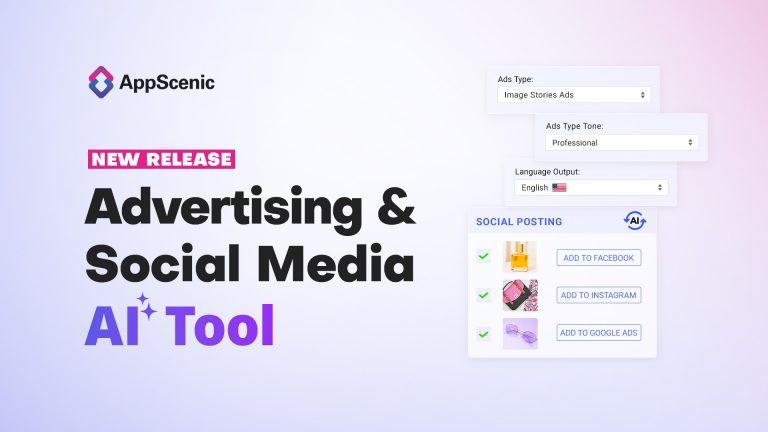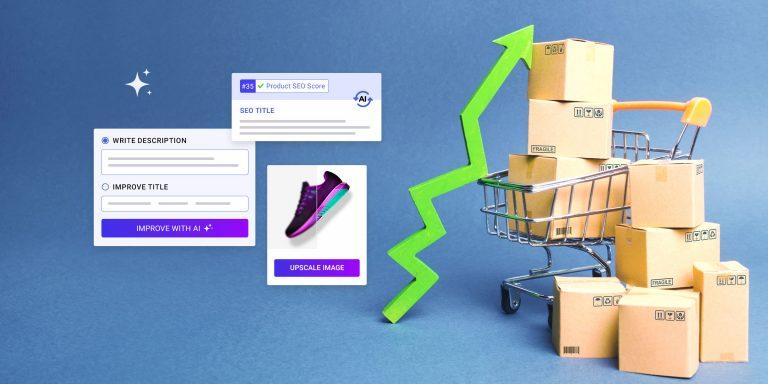In today’s fast-paced ecommerce landscape, running a dropshipping business manually can become time-consuming and overwhelming. That’s where dropshipping automation can change the game, helping entrepreneurs streamline their operations, increase efficiency, and scale faster than ever before.
But what exactly is dropshipping automation, and how can it transform your business? In this article, we’ll explore the core concepts of automation in dropshipping, break down the benefits it brings, along with a few cons, and explain how you can leverage automation tools to take your business to new heights.
Table of Contents
So, what exactly is dropshipping automation?
Dropshipping automation is when you use technology and software tools to simplify and automate key processes within our dropshipping business. It helps reduce or eliminate manual tasks, allowing business owners to focus more on strategic decision-making and scaling their operations.
In a traditional dropshipping setup, you’d spend time managing inventory, processing orders, updating product listings, tracking shipments, and handling customer service. With automation, many of these repetitive tasks are handled by software, freeing up your time to concentrate on marketing, product research, and actually growing your business.
Key areas of dropshipping automation
To truly understand the power of dropshipping automation, let’s break down some of the key areas where automation tools can make a big impact:
1. Inventory management
Automation tools help sync your inventory with suppliers in real-time, meaning your store reflects up-to-date stock levels. You don’t have to manually check with suppliers to ensure items are in stock. Automation prevents you from selling out-of-stock items and avoids disappointing customers.
2. Order processing
Instead of manually placing orders with suppliers when a customer makes a purchase, automation tools forward customer orders to the supplier automatically. This reduces human error and speeds up fulfillment, helping you maintain a smooth and efficient operation.
3. Product listings
Managing product listings across multiple platforms can be a headache, but automation software allows you to bulk-upload product details, images, and prices. You can also sync changes across platforms, ensuring your listings are always accurate and up to date.
4. Pricing automation
Dynamic pricing automation tools adjust your product prices based on factors such as competition, market trends, or profit margins. This ensures that you remain competitive without having to constantly monitor prices and make manual adjustments.
5. Shipment tracking
After an order is fulfilled, shipment tracking automation provides customers with updates and allows you to monitor deliveries in real time. This helps improve transparency and builds trust with your customers.
6. Customer service automation
Automated customer service tools, like chatbots or AI-powered email responses, help address common customer queries quickly. This improves customer experience and reduces your workload when handling inquiries.
Read more: How to Build and Maintain Customer Trust in Your Dropshipping Business
The benefits of dropshipping automation
So, how can dropshipping automation transform your business? As you can already imagine, the benefits are numerous, but here are some key advantages that automation offers.
1. Saves time and increases efficiency
Time is your most valuable asset as a business owner. Manually handling every part of the dropshipping process can quickly become a challenge, especially as your business grows. Automation tools allow you to cut down on manual tasks, making your operations smoother and faster. Instead of spending hours managing orders and inventory, you can focus on higher-level tasks like marketing and customer acquisition.
For example, instead of logging into your supplier’s website to place every order manually, automation tools can automatically process orders for you in real time, freeing up hours in your day.
2. Reduces human error
Manually entering data or fulfilling orders opens the door to mistakes, such as an incorrect shipping address, a missed order, or wrong inventory levels, that can cost you time and money. Automation minimizes the risk of human error, ensuring accuracy in order processing, pricing adjustments, and inventory updates. This translates into fewer issues and better customer satisfaction.
3. Scalability
One of the biggest challenges in scaling a dropshipping business is the increasing volume of tasks as your orders grow. When you automate processes like order fulfillment, inventory tracking, and customer service, scaling becomes much easier. Whether you’re processing 10 orders a day or 1,000, automation allows you to handle the workload without the need to hire additional staff or invest more time.
4. Real-time data and insights
Automation tools provide real-time analytics and data on your business performance, from sales trends to inventory levels and shipping times. These insights help you make better decisions, such as which products to promote, when to restock, and how to adjust your pricing strategy to maximize profits. Having access to real-time data gives you a competitive advantage in a rapidly changing market.
5. Improved customer experience
With faster order processing, real-time shipment tracking, and quick responses to inquiries through automated customer service, you’re able to deliver a better customer experience. When customers have a positive shopping experience, they’re more likely to leave positive reviews, recommend your store, and make repeat purchases.
6. Cost efficiency
While there is an initial cost to implementing automation tools, the long-term savings can be substantial. By reducing the need for additional staff, minimizing errors, and improving operational efficiency, automation lowers your overall operational costs. Plus, with automation handling repetitive tasks, you can redirect your time toward activities that generate more revenue, such as marketing and product expansion.
The cons of dropshipping automation
While dropshipping automation offers undeniable benefits in terms of efficiency and scalability, it’s important to recognize that it has drawbacks too. Understanding these potential downsides will help you make informed decisions as you integrate automation tools into your business. Here are some of the most common cons of dropshipping automation,
1. Smaller profit margins
One of the most notable downsides of dropshipping, especially when automated, is the typically smaller profit margins. When you automate tasks like order fulfillment, inventory management, and shipping, you’re essentially outsourcing these processes to suppliers and software platforms. While this saves time and reduces manual labor, the convenience comes with added costs.
2. More technical know-how required
Automation tools can simplify the day-to-day operations of a dropshipping business, but using them effectively requires a certain level of technical expertise. Implementing automation software involves choosing the right platforms, setting up integrations, and performing ongoing maintenance to ensure everything runs smoothly.
Moreover, automated platforms and software frequently require updates, and sometimes, bugs or glitches can disrupt your workflow. Managing these technical aspects can become a challenge, especially for entrepreneurs without a background in ecommerce technology.
3. Less control over your business
When you opt for dropshipping automation, you inherently give up some control over key aspects of your business, such as inventory management, shipping, and fulfillment. Since your suppliers are responsible for product availability, order processing, and packaging, you have limited oversight of what happens once a customer makes a purchase.
The more you automate, the less room you have to make real-time adjustments or intervene when something goes wrong.
4. Less flexibility for unique customer requests
One of the trade-offs of using dropshipping automation is reduced flexibility in handling unique customer requests or custom orders. Since your suppliers control the products and fulfillment process, there’s little room for personalized or customized options. This can be a downside if you want to offer unique features or one-off products for special customer requests.
How dropshipping automation tools can transform your business
Now that you understand the benefits and the cond, let’s explore how automation tools can specifically transform your dropshipping business.
1. Automated order processing
Platforms like AppScenic streamline your order processing by automatically sending orders to suppliers once a customer places an order. This means that as soon as a purchase is made, your supplier is notified, and the fulfillment process begins without you lifting a finger. No more manual tracking, no more delays, and your business runs smoothly even when you’re not actively managing it.
2. SEO and product listing optimization
For dropshippers, staying visible on search engines is crucial. With AI-powered tools, like the AppScenic SEO Tool, you can automatically generate optimized product titles, descriptions, and keywords to boost your store’s visibility. These tools continuously update your listings to stay competitive, which can lead to higher search rankings and increased traffic to your store.
Read more: Advanced SEO Strategies for Dropshipping Websites (Easy to Apply)
3. Inventory and price syncing
Platforms like AppScenic also offer real-time inventory and price syncing with your suppliers. This ensures that your product listings are always up to date, so you never accidentally sell out-of-stock products or miss out on price adjustments that could benefit your margins.
4. Automated ad campaigns
Marketing automation tools allow you to create and manage ads for Facebook, Google, and Instagram with minimal manual effort. These tools can help you track and adjust ad performance in real time, optimizing your campaigns for better ROI. With AI tools, you can even generate ad copy and imagery, making it easy to run effective marketing campaigns.
5. Customer relationship management (CRM)
Automating customer interactions helps build stronger relationships with your audience. Tools like chatbots can handle customer queries 24/7, while email automation can be used for post-purchase follow-ups, product recommendations, and special offers to increase customer retention.
Embrace automation and take your dropshipping business to the next level
Automation isn’t just a trend, it’s a necessity for any dropshipping business looking to scale and remain competitive in today’s ecommerce landscape. By automating your core processes, you can save time, reduce costs, eliminate errors, and provide a better customer experience. More importantly, automation frees you up to focus on the bigger picture: growing your business.
Whether you’re just starting out or looking to take your dropshipping business to the next level, integrating automation tools into your operations is one of the smartest investments you can make. Platforms like AppScenic provide a comprehensive suite of automation features, from order processing to inventory management and even SEO optimization, making it easier than ever to run a successful dropshipping business.
Read next: The Future of Dropshipping Automation: What’s Next?












